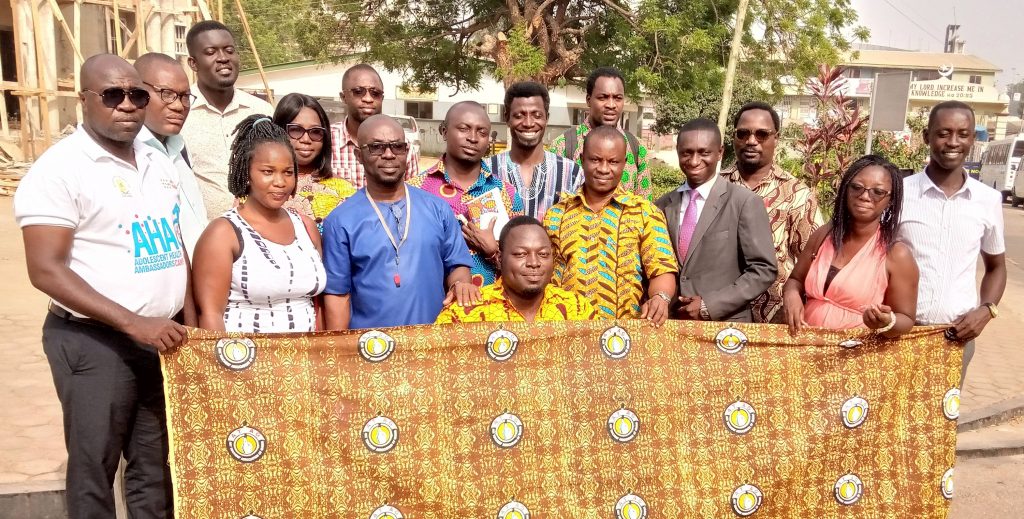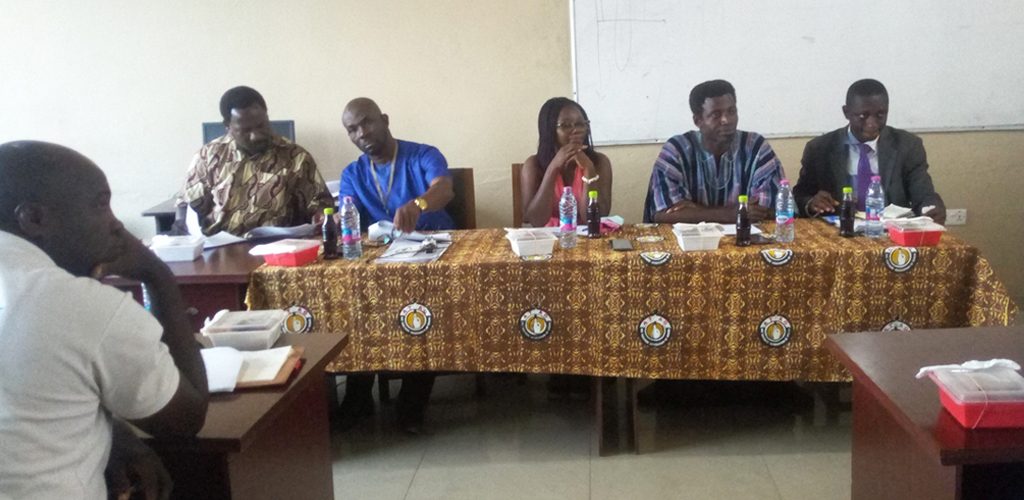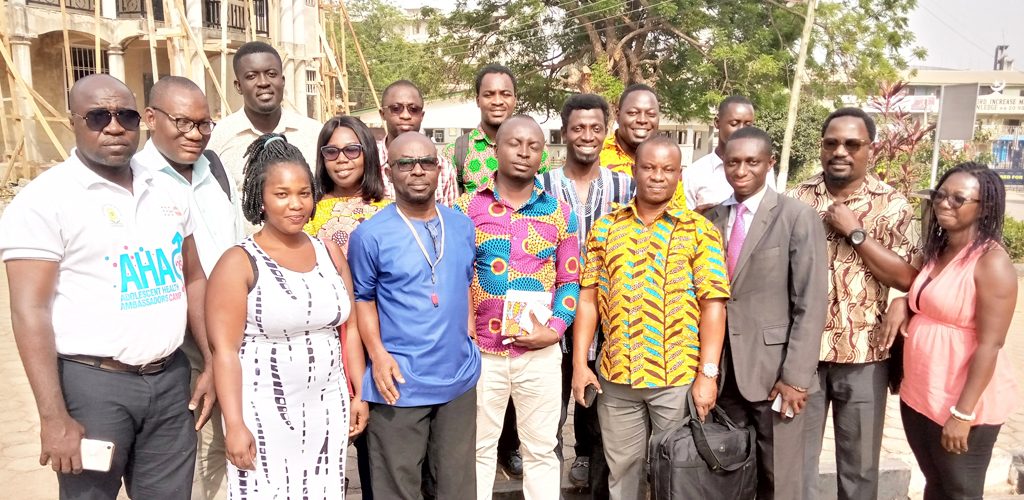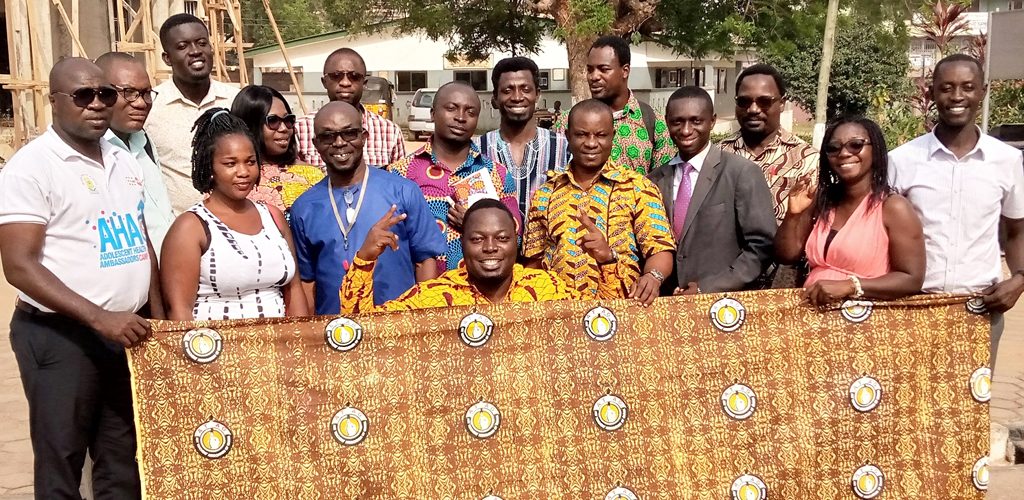Premised on qualitative case study design, the study investigated the employability of Graphic Design graduates of University of Education, Winneba (UEW) with reference to graduate expectations and realities in the world of work. Twenty-eight (28) Bachelor of Arts (BA) Graphic Design graduates of the July 2012 year group and one other key participant all of the Department of Graphic Design of UEW were selected through the use of purposive and exponential non-discriminate snowball sampling techniques. Empirical data were collected through opinionnaire and semistructured interview. The study found the rationale of BA Graphic Design programme of UEW to have bi-focal agenda of equipping its graduates with the needed expertise in Graphic Design practice and education as well as guarantee its graduates employability in the industrial or entrepreneurial establishments. It was also established that most of the July 2012 BA Graphic Design graduates of UEW expected to gain immediate employment by the industry only, after graduation. Since the rationale of the programme is bi-focal in nature, the study recommends that the department of Graphic Design, UEW should provide adequate sensitization and orientation to prospective applicants including continuing students on the nature of the programme as well as initiate career orientation programmes for its graduates in order to broaden their knowledge on employability in any of the job prospects of the programme after school.
All posts by gata
Navei, N. (2020). Tracer study on the employability of Graphic Design graduates of University of Education, Winneba
Analysis of Ghanaian political parties’ manifesto promises on the creative Arts sector: A case study of 2012, 2016 & 2020 manifestoes
 During every election year, both the National Democratic Congress (NDC) and the New Patriotic Party (NPP) articulate their campaign promises on what they intend doing to promote the entire Creative Arts sector in their manifestoes. The duopoly (NDC & NPP), have been alternating political power in the fourth republic of Ghana. It is against this background that this study focused on the comparative content analysis of the manifestoes of these two major political parties in Ghana to reveal their promises and its deliverability relating to the Creative Arts. Comparative content analytical approach was used to analyse the content of the promises. It took into cognisance the promises they delivered when they were given the nod by the Ghanaian electorates. The study revealed that with the absence of National Creative Arts Policy, both the NDC and NPP have provided middle-of-the-road art policies in their manifestoes which have largely remained unfulfilled since 2012 to present. The promises were bias towards the performing arts, leaving the Visual Arts. Both parties made promises of establishing a resilient Creative Arts sector by building and supporting more museums, create jobs for art and craft producers through their policy initiatives. They also promised of building art galleries and regional theatres and establish Creative Arts Fund, support musicians, film actors and producers in the performing arts industry, yet all these juicy promises have proved to be mere lip service under the respective tenure of these two political parties.
During every election year, both the National Democratic Congress (NDC) and the New Patriotic Party (NPP) articulate their campaign promises on what they intend doing to promote the entire Creative Arts sector in their manifestoes. The duopoly (NDC & NPP), have been alternating political power in the fourth republic of Ghana. It is against this background that this study focused on the comparative content analysis of the manifestoes of these two major political parties in Ghana to reveal their promises and its deliverability relating to the Creative Arts. Comparative content analytical approach was used to analyse the content of the promises. It took into cognisance the promises they delivered when they were given the nod by the Ghanaian electorates. The study revealed that with the absence of National Creative Arts Policy, both the NDC and NPP have provided middle-of-the-road art policies in their manifestoes which have largely remained unfulfilled since 2012 to present. The promises were bias towards the performing arts, leaving the Visual Arts. Both parties made promises of establishing a resilient Creative Arts sector by building and supporting more museums, create jobs for art and craft producers through their policy initiatives. They also promised of building art galleries and regional theatres and establish Creative Arts Fund, support musicians, film actors and producers in the performing arts industry, yet all these juicy promises have proved to be mere lip service under the respective tenure of these two political parties.
Asenso, K., Issah, S. & Som, E. K. (2020). The use of visual arts in environmental conservation in Ghana: The case of Adams Saeed
The use of Visual Arts to promote environmental conservation is an important vehicle but its strategy for effective conservation outreach is hidden. In Ghana, the use of Visual Arts to promote environmental conservation and preservation is accelerating on a very low-pace, and those who try to initialize this culture have often remained largely undocumented, or stigmatized and stereotyped as mere objects of decoration in public space and homes. The aim of this is to recommend a return to a primary lifestyle which reminds us of basic realities easily forgotten in modern way of life which can be much more than just a necessity. The study sought to identify and document some visual arts works of Ken Kojo Adams Saeed which promote environmental conservation in Ghana. Descriptive research methodology was utilised in this study. The study concluded that, Ken Kojo Adams Saeed, a Ghanaian young artist, identified waste that create nuisance and sanitation problems in communities and used them as a resource material to create phenomenal sculptural works. His works educate and conscientize the public on waste management and environmental conservation. The study, therefore, recommends the promotion of environmental artists to harness development.
Quarshie, B. & Kpogo, R. R. Y. (2020). Art facilities and learning outcomes in selected Ghanaian public Senior High Schools in the Central Region
This article examined available facilities (tangible and intangible) in selected Ghanaian public Senior High Schools to find out if they possess what it takes to impact the needed skills in students to meet the demands of the 21st Century job market. Four schools were purposefully selected to fairly represent the various grades of senior high schools in the Central Region of Ghana. Data was collected through interviews and observations whereas analysis was done using the thematic approach. Findings indicate that facilities in schools were highly inadequate. Visual arts teachers were not motivated to teach while students lack basic learning resources thereby impacting negatively on performance outcomes of both teachers and students. The future of Visual Arts education in Ghanaian Senior High Schools is feared to remain sustainable as a practical programme as authorities continually fail to provide needed basic art facilities.
Essel, O. Q. & Asare, G. D. (2020). Breaking the academic silence on anonymity of indigenous textiles: Textile art of Nana Kwaku Duah II in focus
The study sought to explore the biographical account of Nana Kwaku Duah II and examine his major innovative and creative contributions in textile designing, weaving and Adinkra printing cottage industry. In this study, narrative analysis and oral history methods constituted the form of biographical method used in addition to descriptive research design. Unstructured interview and unobtrusive observation were the forms of instrumentations used for the data collection. Data was analysed using descriptive and narrative analysis tools. It was revealed in the study that Nana Kwaku Duah II is a presidential fabric designer who fuses indigenous adinkra printing technology, kente weaving techniques and embroidery art in creating a unique composite breed of fabrics. His unique fabric designs have received commendation from users and admirers, yet he has remained anonymous in academic circles as the textile designer. For instance, his Nyame na ayɛ design worn by President Nana Addo Dankwa Akufo Addo during his 2017 inauguration ceremony. It was highly praised by many as kente, though it was produced with a combination of kente and embroidery stripes. It is recommended that the nation must consider honouring his creative efforts as it persists in other developed nations who honour their creatives. The textile designs of this creative designer must feature in the collections of the Ghana National Museum for art education purposes.
Navei, N. (2020). Sociocultural contexts of Chaira pottery art
The uniqueness of pottery is synonymous with its makers. The pottery art of the various ethnic groups in Ghana is inseparable from their cultural identities in that, the art is entrenched in their cultures. Notwithstanding this, much is not documented about the sociocultural contexts of Charia pottery art in the Upper West Region of Ghana. Adopting qualitative paradigm and case study design, the study purposively sampled eight (8) practising potters of not less than three decades of pottery experience in Charia. Empirical data was collected through interviews and field observation in order to reveal the sociocultural contexts of Charia pottery art. The study concluded that Charia pottery art has long historical standing, however, the art has since become women’s job in the generational life of Charia, and largely practiced by old women. The study recommends massive involvement of Charia women including the young ladies in the pottery art of Charia since the practice of pottery/ceramic has become a lucrative business venture in contemporary Ghana. Also, it emerged that Chariapottery art is a home affair. The establishment of a communal pottery centre in Charia by the potters through the formation of a formidable front is recommended. The sociocultural contexts of Charia pottery art is that which interlinks with the daily lives of the people. It is recommended that, Charia potters should continuously produce such culturally-related pottery wares to showcase, and preserve the sociocultural identity of the people to their future generations and for public admiration.
PETITION TO PROF. KWASI OPOKU-AMANKWA, DIRECTOR GENERAL OF GHANA EDUCATION SERVICE, ON THE ONGOING 2020 VISUAL ARTS WASSCE PRACTICAL FEES CHALLENGES IN PUBLIC SENIOR HIGH SCHOOLS
 The Art Teachers Association of Ghana (ATAG) commends government for being proactive in absorbing the fee associated with 2020 WASSCE (West African Senior Secondary School Certificate Examination) practical for the Visual Arts student-finalists. It is first of its kind in the history of WASSCE and, therefore, highly commendable.
The Art Teachers Association of Ghana (ATAG) commends government for being proactive in absorbing the fee associated with 2020 WASSCE (West African Senior Secondary School Certificate Examination) practical for the Visual Arts student-finalists. It is first of its kind in the history of WASSCE and, therefore, highly commendable.
However, our visits to the Senior High Schools upon commencement of the examination on July 20, 2020 revealed that monies allocation per each student for the execution of the practical works in the Visual Arts subjects was Fifteen Ghana Cedis (15GHS). Based on the demand of the questions, this money is woefully inadequate and cannot cater for even one of the four (4) Visual arts elective subjects the students pursue.
There are eight (8) Visual Arts Subjects namely Basketry, Jewellery, Sculpture, Ceramics, Picture Making, Graphic Design, Leatherwork and Textiles in addition to General Knowledge in Art (GKA) which students are required to execute practical works as part of their 2020 WASSCE final examination. These subjects are categorised into three-dimensional (Leatherwork, Basketry, Jewellery, Sculpture and Ceramics), and two-dimensional (Picture Making, Graphic Design, and Textiles). Of these two categories, each student is mandated to study two subjects from each category in addition to General Knowledge in Art (GKA). This allow students to study an average of four visual arts subjects of which they are to execute practical works.
GOODWILL MESSAGE FROM ATAG NATIONAL SECRETARIAT TO 2020 WASSCE VISUAL ARTS EXAMINEES
 We send our very best wishes to all Visual Arts student-finalists partaking in the 2020 West African Senior Secondary School Certificate Examination (WASSCE) starting from Monday, July 20, 2020. With your creativity, innovative spirit and discipline, follow all examination rules and regulations, as well as the COVID-19 protocols to have a fruitful examination. With your studiousness and confident urge in the three years of training from your Art Teachers, put up your very best and success will clad your efforts.
We send our very best wishes to all Visual Arts student-finalists partaking in the 2020 West African Senior Secondary School Certificate Examination (WASSCE) starting from Monday, July 20, 2020. With your creativity, innovative spirit and discipline, follow all examination rules and regulations, as well as the COVID-19 protocols to have a fruitful examination. With your studiousness and confident urge in the three years of training from your Art Teachers, put up your very best and success will clad your efforts.
We wish you best of luck in all your papers.
SAVE THE GHANA NATIONAL MUSEUM FROM DECAY
As part of the 2020 International Museum Day celebration, the Art Teachers’ Association of Ghana has appealed to government to save the Ghana National Museum from decay and continue with the 1964 abandoned museum extension project. The museum has been closed for five years now due to leakages of this temporary building. In delivering of the address, Dr Osuanyi Quaicoo Essel, the national president of the association urged the government to focus attention on the museum since it is the powerhouse of the nation’s material and non-material cultural history. He also appealed for the establishment of a National Art Gallery.
Watch the video detailing the address of ATAG.
ATAG Surpreme Council urges members to support progressive development of the association
 The Supreme Council, the second highest decision-making body of the Art Teachers’ Association of Ghana (ATAG), at its first general meeting held on January 6, 2020 at T. I. Ahmadiyya Senior High School (TI AMASS), Kumasi, urged members to be pro-active and give their best to serve and build the association. In his welcoming address at the meeting, Mr Antwi-Wiafe (Cuma Lee), the past first National President of ATAG who doubles as a teacher of Ahmadiyya Senior High School (TI AMASS) welcomed members of the Supreme Council to the meeting and expressed his sentiments about the progressive development of the association. He added that becoming a member of such a prestigious subject-based association is paramount since it contributes to one’s continuous professional development in academic pursuit as professional art teacher. Antwi-Wiafe stressed on the need for members to register online on ATAG website to reap the full benefits the association has to offer.
The Supreme Council, the second highest decision-making body of the Art Teachers’ Association of Ghana (ATAG), at its first general meeting held on January 6, 2020 at T. I. Ahmadiyya Senior High School (TI AMASS), Kumasi, urged members to be pro-active and give their best to serve and build the association. In his welcoming address at the meeting, Mr Antwi-Wiafe (Cuma Lee), the past first National President of ATAG who doubles as a teacher of Ahmadiyya Senior High School (TI AMASS) welcomed members of the Supreme Council to the meeting and expressed his sentiments about the progressive development of the association. He added that becoming a member of such a prestigious subject-based association is paramount since it contributes to one’s continuous professional development in academic pursuit as professional art teacher. Antwi-Wiafe stressed on the need for members to register online on ATAG website to reap the full benefits the association has to offer.
Dr. Osuanyi Quaicoo Essel, the current National ATAG President also welcomed members and delivered the current state of ATAG since the induction of his administration from 17thAugust 2019 to date. He pointed out that, the contributions of the National Executive Council (NEC) and support from the membership of ATAG have contributed to registration of the Association (ATAG) at the Registrar General’s Department of the Republic of Ghana; creating ATAG website that include a database for membership registration and interactive engagements. He encourage all members to register online (https://www.jaae.atagonline.org/join-now/) and pay their dues for more development.
Registering as a paid-up member of ATAG comes with benefits including free scholarly journal and magazine publications, free annual professional development training and conferences, ATAG paraphernalia (Cloth, sticker, etc), membership ID Card, free access to teaching and learning resources in its database.
The Supreme Council discussed the five-year ATAG strategic Plan (2019 – 2023). The strategic plan prepared by the National Executive Council (NEC) was laid before the Supreme Council and was fully supported to be operationalized after changes effected within some parts of the documents. A brief discussion was held on how members could register online, pay their dues, communicate and interact with each other. The Supreme Council was delighted that member could go online to the website and register. Two main channels were identified for the payment of the dues. The first is by the online payment using the Momo Pay, which is renewable every year and the second is payment through monthly deductions from the Controller and Accountant General’s Department. For the latter option members may have to fill a form to that effect. Dr. Osuanyi Quaicoo Essel added that the zonal categorization is meant for registration purposes and to widen the membership of the association. It is aimed at giving each member a unique identity code that would serve as the ATAG registration number. The regional code would be the prefix for a member’s identity number, followed by the year of registration, month of registration, zonal code and the reference number. The immediate President of ATAG, Mr. Ibrahim Mahama, called for a massive membership registration drive and campaign from all zones within the country.
The Supreme Council charged the various regional presidents to select three to four interim zonal executives to manage the various zones and furnish the national executive council with their names. The Council appointed Mr Paul Okyere Afoakwa as the acting President for Central Region until a substantive president is elected. The Constitutional Review Committee was also tasked to add to the constitution the impeachment regulation for the conducts of all executive members whose conduct does not contribute to the growth of the association.



Authored by
Daniel Ato Adubah
(National Secretary)